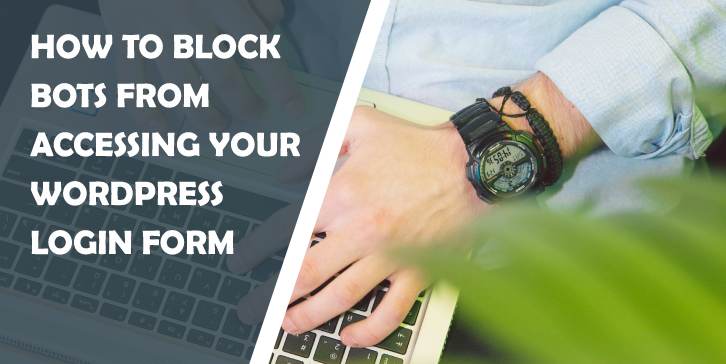Bots are becoming an increasing problem for WordPress site owners, as they can quickly overload your login page with numerous login attempts, which can result in your site becoming slow or even being taken down. The good news is that there are several ways to block bots from accessing your WordPress login form. In this article, we’ll explore some of the best methods to protect your site from malicious bots.
1. Use a Plugin
One of the easiest and most effective ways to block bots from accessing your WordPress login form is by using a plugin. There are many plugins available that can help you secure your site from bots, including plugins like WP Login Lockdown. These plugins provide a range of security features, including bot protection, brute-force attack prevention, and malware scanning.
2. Implement reCAPTCHA
Another way to block bots from accessing your WordPress login form is by implementing reCAPTCHA. This is a free tool offered by Google that helps to identify whether a user is a human or a bot. When a user attempts to log in to your site, they will be prompted to complete a simple test to prove that they are not a bot.
3. Use Two-Factor Authentication
Two-factor authentication is a security measure that requires users to provide two forms of identification before they can access your site. This can include a password and a unique code sent to their phone or email. This added layer of security can help to prevent bots from gaining access to your WordPress login form.
4. Whitelist IP Addresses
One effective way to block bots from accessing your WordPress login form is by whitelisting IP addresses. This involves creating a list of approved IP addresses that are allowed to access your site while blocking all other IP addresses. This can help to prevent bots from accessing your site and attempting to log in.
5. Rename Your Login Page
Another way to block bots from accessing your WordPress login form is by renaming your login page. By default, WordPress uses a standard login URL, such as “wp-admin” or “wp-login.php”. Bots are programmed to target these standard URLs, so renaming your login page can make it more difficult for bots to find your login form.
6. Limit Login Attempts
Limiting login attempts is another effective way to block bots from accessing your WordPress login form. By default, WordPress allows unlimited login attempts, which can make your site vulnerable to brute-force attacks. However, by limiting the number of login attempts allowed per user, you can help to prevent bots from overwhelming your login page with numerous login attempts.
7. Monitor Your Site for Suspicious Activity
Finally, it’s important to monitor your site for any suspicious activity, such as multiple failed login attempts from the same IP address or unusual login activity. This can be done using a security plugin or by regularly reviewing your site’s logs. By detecting and responding to suspicious activity, you can help to prevent bots from accessing your WordPress login form and compromise your site’s security.
In conclusion, bots can be a major problem for WordPress site owners, but there are several effective ways to block them from accessing your WordPress login form. By using a plugin, implementing reCAPTCHA, using two-factor authentication, whitelisting IP addresses, renaming your login page, limiting login attempts, and monitoring your site for suspicious activity, you can significantly reduce the risk of bots compromising your site’s security. By taking these steps, you can help to protect your site, your users’ data, and your business from the damaging effects of bot attacks.

